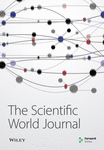Frontiers in Vitamin Research: New Antibodies, New Data
Abstract
Since 2004, the anatomical distribution of vitamins in the monkey brain, studied using immunohistochemical techniques and new tools (specific antisera that discriminate different vitamins reasonably well), has been an ongoing research field. The visualization of immunoreactive structures containing vitamins (folic acid, riboflavin, thiamine, pyridoxal, and vitamin C) has recently been reported in the monkey brain (Macaca fascicularis), all these vitamins showing a restricted or very restricted distribution. Folic acid, thiamine, and riboflavin have only been observed in immunoreactive fibers, vitamin C has only been found in cell bodies (located in the primary somatosensory cortex), and pyridoxal has been found in both fibers and cell bodies. Perikarya containing pyridoxal have been observed in the paraventricular hypothalamic nucleus, the periventricular hypothalamic region, and in the supraoptic nucleus. The fibers containing vitamins are thick, smooth (without varicosities), and are of medium length or long, whereas immunoreactive cell bodies containing vitamins are round or triangular. At present, there are insufficient data to elucidate the roles played by vitamins in the brain, but the anatomical distribution of these compounds in the monkey brain provides a general idea (although imprecise and requiring much more study) about the possible functional implications of these molecules. In this sense, here the possible functional roles played by vitamins are discussed.




